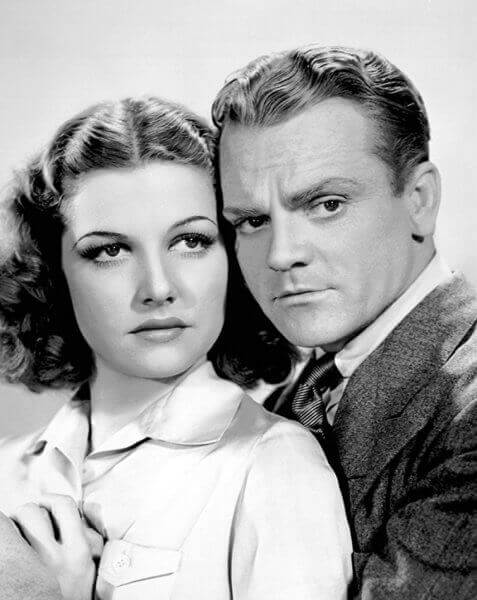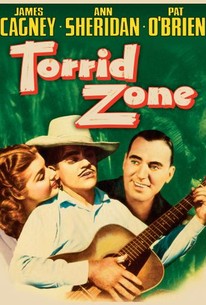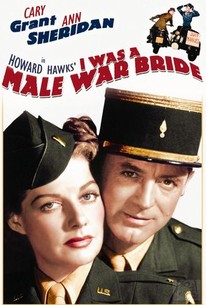
Clara Lou Sheridan didn’t become “Ann” Sheridan until she came to Hollywood. She was from Denton, Texas, where she was born February 21, 1915. She grew up very much a tomboy and preferred horsing around with the boys of her age playing football, riding horses, roping bulls, fixing cars, and being free as the wind.
She did dream, however, of getting out of Texas and going to Broadway to become a singer or dancer. The bright lights attracted her, much to the disapproval of her stern parents. She really wanted to be a singer and perform with the big bands of the day.
She was a pretty young thing, and her older sister Kitty conspired to get Clara Lou on her way to her dream by enrolling her in a Paramount Pictures beauty pageant. By 1932 she was enrolled as a student at North Texas State Teachers College when she won the contest along with 30 other girls. The prize was a bit part in a Paramount film and a six-month contract at less than $50 a week. Of the 30 girls, Ann Sheridan was the only one who went on to have a movie career.
Clara Lou brought her Texas sensibility and her droll sense of humor with her to Hollywood. Her tough but tender style was perfect for films, and she had a great sense of humor about herself. Paramount quickly shoved her into several potboilers such as Come On Marines! (1934) and Rumba (1935). After appearing briefly in about 30 films, Paramount really did nothing for her career, and they dropped her contract in 1935.
Warner Bros. was quick to pick up the 19-year-old’s contract and felt she would fit in perfectly with their gritty, front-page style of rat-a-tat dramas. Again, she was shoved into a series of “B” pictures with the likes of newcomers Humphrey Bogart (Black Legion, 1937) and Pat O’Brien (The Great O’Malley, 1937) Other co-stars were Dick Powell and Dick Foran.
She began getting the lead female roles in many “B” pictures, which impressed the studio moguls. She began to get cast in “A” pictures and made a great impression in director Michael Curtiz’s Angels with Dirty Faces (1938) as James Cagney’s girlfriend. Also in the picture were Bogart and O’Brien. Cagney is a gangster and is looked up to by the slum boys (The Dead End Kids). In order to redeem himself, he pretends to be a coward when he goes to the electric chair. Cagney was nominated for an Academy Award®, and Sheridan benefited from the picture being a huge hit.
Tough New York actor John Garfield was her co-star in They Made Me a Criminal (1938). Switching locations, she went out West for Dodge City with the dashingly handsome Errol Flynn in 1939. He was a beautiful man of 29 at the time. During this time, she was married to an actor named Edward Morris. They divorced in 1938.
During a hokey contest to promote Sheridan, the studio crowned her “the Oomph Girl,” as one who is sexy and appeals to men. The studio dreamed up the contest and indicated Sheridan won the title over such other beauties as Hedy Lamarr, Alice Faye, and Carole Lombard. Pure hokum. The title stuck and added to Sheridan’s glamour. She said in later years, “I know if it hadn’t been for ‘oomph’ I’d probably still be in the chorus.”
Warners kept co-starring her with their top male stars. She reunited with James Cagney in Torrid Zone (1940) and made a good drama with Bogart, Ida Lupino, and George Raft in They Drive By Night (1940).
Between 1939 and 1941 she appeared in 13 films. The top female star on the lot was Bette Davis. When the studio bought the Broadway comedy The Man Who Came to Dinner (1941) for Davis, a flamboyant character based on Broadway star Gertrude Lawrence was to be part of the film. Ann Sheridan was the perfect choice to banter with co-star Monty Woolley and funny character actress Mary Wickes. This was another hit that enhanced Sheridan’s career. It didn’t hurt that it was also a Bette Davis picture. She was the Warner Bros. top box-office star.
George Brent was a favorite leading man in many Bette Davis pictures. She adored him and always asked he be in her films. Ann also made a picture with him, the comedy Honeymoon for Three in 1941. She was so impressed with him they got married! Unfortunately, one day Brent came home and found Ann warming her feet with Errol Flynn in the master bedroom. Sheridan’s marriage lasted almost a year. When asked why they divorced she said, “Brent was bent.”
In 1942 Sheridan got one of the best pictures of her career. She was cast opposite the future President of the United States, Ronald Reagan, in the drama King’s Row. In the film, Reagan’s character’s legs are amputated by a cruel small-town surgeon. Reagan’s famous line was, “Where’s the rest of me?!” Sheridan was only too happy to play the tomboy heroine. She once remarked, “I had to fight for everything at Warners. A knock-down, drag-out fight. You didn’t always win, but it let them know you were alive.” Scuffling with the Front Office helped. “I would never have gotten the role in King’s Row if I hadn’t fought for it,” she said. “And that was one of the best parts I ever had at the studio.”
Ann went back to continuing her torrid affair with Errol Flynn when they made The Edge of Darkness (1942), in which she played a Norwegian resistance fighter during World War II. When Ann was having a bad hair day, Flynn nipped over to another co-star’s dressing room to play his version of “Hide the Hotdog.”
The studio kept casting her in one popular film after another. She appeared with comedian Jack Benny in George Washington Slept Here, and did Juke Girl with Reagan again. A musical called Shine On, Harvest Moon came along in 1944 in which she played old-time Broadway actress Nora Bayes. Her leading man was Irish tenor Dennis Morgan, a popular film star at the time. She went from the musical right into the war-time comedy Doughgirls (1944) with wise-cracking Eve Arden, comic Jack Carson, and beauty Alexis Smith.
She didn’t work again until 1946’s lightweight One More Tomorrow with Dennis Morgan, droll comic Reginald Gardner, Jack Carson, and again Alexis Smith.
By the time 1947 arrived, she had filmed the noir-ish Nora Prentiss, in which she played a femme-fatale who runs off with a married dentist (Kent Smith) who has doubts about leaving his wife (Rosemary DeCamp). It was one of 1947’s biggest box office hits.
Steam was running out of her career at Warners. They felt that a woman of 35 was all washed up! They shoved her into a tired Western with Errol Flynn called Silver River in 1948. Flynn had been heavily drinking. The once youthful man who was notorious for pole-vaulting from one leading lady’s boudoir to another, would die within two years at age 50. Sheridan completed her contract with the studio and went on her own to freelance.
She did well on her own with her first picture being Good Sam (1948) with handsome leading man Gary Cooper. He wasn’t much of a talker and was a graduate of the “Yup! and Nope!” School of Acting. He played a big-hearted man who would give the shirt off his back to everybody, but he neglected his wife (Sheridan). Also in the cast were Ruth Roman, Louise Beavers, and Oscar® nominated actress Joan Lorring (The Corn is Green).
But her biggest post-Warner Bros. film was the riotous comedy from director Howard Hawks, I Was a Male War Bride. With Cary Grant as her co-star, she couldn’t miss. Cary played a French Captain assigned to work with Sheridan, a First Lieutenant of the U.S. Army. They fall in love and get married. But, he can’t travel to the States because of a series of mishaps, and he ends up impersonating Sheridan’s “wife” wearing complete drag and a fright wig. The set-up is zany comedy, and the two stars shine with their different approaches to a funny line.
She kept busy freelancing and made a picture in 1950 with Victor Mature at 20th Century Fox titled Stella, a comedy. This led Universal Pictures to offer her a contract, which she signed. While at the studio she made a series of films such as Steel Town (1952) and the comedy Take Me to Town (1953).
Her days as a leading lady were slowing down, but she managed to star in Appointment in Honduras with Glenn Ford in 1953, Come Next Spring in 1956 with Steve Cochran, and in the big MGM CinemaScope, Metrocolor splash The Opposite Sex (1956) with June Allyson, Joan Collins, Ann Miller, and Agnes Moorehead. It was a remake of 1939’s The Women, which starred Joan Crawford, Paulette Goddard, Rosalind Russell, Norma Shearer, and Joan Fontaine. The catty and funny film had all the women talking about their men and their divorces. That was the last big and decent studio film she made.
She turned to hitting the road in some plays (Kind Sir in 1958) and Odd Man In (1959). She met and married her co-star, Scott McKay, during these stage tours. As did many actresses “of a certain age,” she turned to television to find suitable roles. For a time, she appeared on the soap opera Another World, and did guest-starring roles on Wagon Train.
She was signed to star in her own series, a comedy-Western, Pistols ‘n’ Petticoats. She became ill with liver cancer and died at age 51 January 21, 1967. The 19th episode of her series aired on the day she died. She is buried at the famous Hollywood Forever Cemetery, next door to Paramount Studios.








